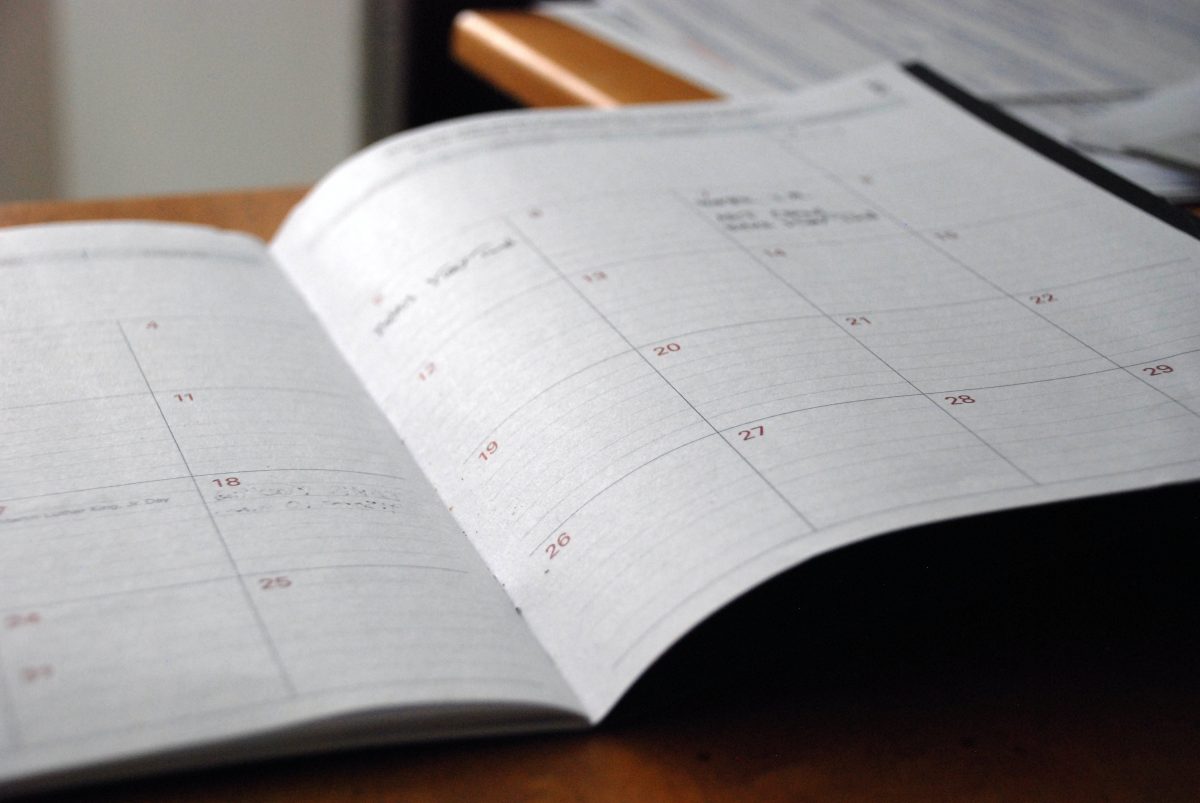
There are many benefits to learning a new language, but learning in a classroom is not for everyone. Whether it is time constraints or that you just prefer flying solo, we know it can be tricky to get started on a language. That is why, in this post, we’ll be focusing on how to learn Spanish on your own.
From planning to resources and lifestyle changes, we’ll cover every aspect that can have a positive effect on your learning experience, as well as the particular challenges Spanish poses. Are you ready to dive in?
Three main tips to learn Spanish on your own
In this guide, we’ll cover three main tips to learn Spanish on your own: setting your goals and finding the right resources, practicing and testing your skills, and incorporating Spanish into your daily life.
1. Goals and resources

The first thing you should do before getting started is figuring out how far you want to take your Spanish learning and how you will accomplish it. So let’s focus on planning your learning experience.
Set your goals
The first thing you should do is set your goals. Do you want to learn Spanish on your own to travel? For business? Just because you enjoy languages? Depending on the answer, the resources that you will need and the time-dedication required may vary.
Do keep in mind that your goals should be realistic. If you’re a beginner, you will not become proficient in six months to a year, but you will be able to master basic skills to communicate in Spanish. The most important thing is to be motivated, determined and patient.
Set time apart
It is important to note that learning a new language takes commitment. You will need to say time apart every day if you want to make real progress.
One hour each day would be excellent to learn Spanish on your own. Making a schedule and sticking to it is probably the best way to go. Ideally, you should also set some extra time apart to practice your oral skills once or twice a week.
Resources based on type of learner
Not everyone learns the same way, so taking time to reflect on your specific learning style is a must before getting started.
For example, if you love reading, you can focus on some grammar books (here are some you may find useful). Now, we’re not saying you should read a grammar book cover to cover, but it is good to have as a reference to combine with other resources. Once you have the basics, you can also take out books in Spanish from your local library, if available.
If you are a visual learner, you should focus on media and videos. There are YouTube channels like this one, focused on teaching you how to learn Spanish on your own, that might be helpful. Moreover, you can focus on watching TV shows and series in Spanish as much as you can.
You may also be an aural learner, meaning you learn best by listening. In this case, audiobooks and podcasts might be a great addition to your learning strategy. Here are some podcasts to get you started.
If you are a verbal learner, you should try to get as much speaking practice as possible. You could find a conversation partner or try out a Spanish meetup in your area. Of course, improving your speaking skills will take time, but you should not be discouraged. Just listening to others and trying to interact in any way you can will definitely be helpful.
Finally, you might be a kinesthetic learner, meaning cultural immersion is the best way for you to learn. This might be the trickiest type of learning to get around but, if conditions allow, you might be able to learn Spanish on your own while visiting some exciting Latin or Spanish locations. You can check out our article on How to Learn Spanish While Traveling in Central America for inspiration. However, if traveling is not a possibility, having a mixture of all the resources above might be a good call for kinesthetic learners who tend to be quite active and a little restless.
Language learning apps
No matter what type of learner you are, language learning apps can be a great asset to help you learn Spanish on your own. We have actually made up a list for intermediate learners, but most of these have material for beginners as well. Moreover, Clozemaster can be a great tool to learn and improve your Spanish skills.
2. Practice and testing

You can create a learning plan that best adapts to your needs with the resources we have mentioned. What you will need to do, no matter what type of learner you are or how much time you have on your hands, is practice and test your language skills and progress.
Practices all skills
Again, regardless of what type of learner you may be, you should make sure to practice all skills if you really want to learn Spanish on your own. That means listening, speaking, reading and writing.
Passive skills (listening and reading) will come easier and will be the ones you develop first, while active skills (speaking and writing) take more time and commitment. You can find resources in this article to help you with each of these four skills.
Find ways to self-test
Since you will not be in a classroom setting, there will be no regular tests or exams. Therefore, you will need to find ways to test yourself to make sure you are making steady progress and don’t crystallize any of the common errors Spanish learners often make.
To do this, you can make your own flashcards or find free textbooks online, like the ones on this site, and also use learning apps as we’ve mentioned above. We’ll take this chance to mention Clozemaster again, as it helps you test your skills and track your progress.
3. Incorporate Spanish into your daily life

To solidify what you have learned and keep adding to it, it is best to find ways to incorporate the language into your daily life. Once you’re comfortable enough with your language skills, here are a handful of ways in which you can do this.
Watch films and TV series in Spanish
You can find films and TV series in Spanish to watch on your preferred streaming service. If you are still in the early stages, you can watch them with English subtitles, then with Spanish subtitles and, when you feel confident enough, with no subtitles at all.
Streaming services today have a wide array of content from all over the globe, which will give you the chance to hear accents and vocabulary from different Spanish-speaking countries.
Listen to music in Spanish
If you are a music fan, you can sign in to your Spotify account and find Spanish artists in your favorite genres. Here are some easy (and catchy) songs to help you learn Spanish on your own.
Join a Spanish conversation club or meetup
To practice your speaking skills, you can join a conversation club or meetup. There are plenty of face-to-face and online ones if you just dig a little online. You might even make a new friend with whom to practice your Spanish daily, not only through conversation, but also by writing messages or emails.
Read in Spanish
Reading in Spanish is a great source of vocabulary and a particularly good way to learn how to spell different words. If you are looking for a smaller commitment, you can start by reading the news in Spanish. If you’re a book lover, in this post, you will find a list of sites with free Spanish books for beginners.
Also, reading aloud is a great way to practice your pronunciation skills. Reading (aloud or to yourself) for 15-30 minutes every day can make a huge difference and help you make progress faster.
Switch your phone/computer to Spanish
If you are ready to take things to the next level, you can switch languages on your mobile phone or computer. This might seem risky at first, but we’re confident you’ll get around it. We tend to instinctively know where everything is on phones and computers nowadays, so it shouldn’t be too drastic of a change.
Common challenges when learning Spanish on your own
This article wouldn’t be complete without mentioning some of the challenges of learning this language for English speakers, especially if you plan to learn Spanish on your own. We have added links to extra information and resources on these as well.
1. Gender and number agreement
Unlike English, Spanish includes gender and/or number in articles, adjectives and verbs that must agree with the noun in question. And Spanish gives gender not only to living things but also to inanimate objects, so it can make things a bit more difficult when learning this language.
Let’s look at a couple of examples to give you an idea of what this looks like:
- Las niñas juegan. (The girls are playing.)
Here “Las” (The) is the plural feminine article that corresponds to “niñas” (girls, a plural feminine noun), followed by “juegan”, a plural form of the verb jugar (to play).
- El edificio es azul. (The building is blue.)
In this case, “El” (The) is the singular masculine article that corresponds to “edificio” (building, a singular masculine noun), followed by “es” (a singular form of the verb to be in Spanish) and “azul” (blue, a singular adjective).
If you’re still feeling a bit lost, you can find more information in this article.
2. Verb conjugation
Spanish conjugations can be quite tricky. There are three types of conjugations (depending on verb endings -ar, -ir and -er), three different moods (indicative, subjunctive and imperative) with 20 different tenses in total, plus the three verbals (infinitive, gerund and participle).
Verb forms change quite a bit depending on the tense, and there are both regular and irregular verbs, not to mention stem-changing ones. You can take a look at our Overview of Spanish Tenses for reference.
3. Ser and estar (to be)
To be or not to be? That is the question. Well, not quite. In English, you can be somewhere or you can be someone or something. In Spanish, however, there are two different verbs for these meanings. Understanding this difference and using the right verb at the right time can be tricky, so do take a look at our article on this topic.
4. Accents
In Spanish, there are very specific rules when it comes to where to place the accent on a word. This is helped by the tilde. This little symbol (´) helps when pronouncing various words.
Rules regarding accents in Spanish are pretty straightforward, but can still be quite a challenge to an English speaker. Here’s a great accent guide to get you started.
5. The three “yous”
Unlike in English, there are three ways to address a person in Spanish. “Usted” for formal situations and “tú” for informal ones. But wait, didn’t we say three? Well, in some Latin American countries, there’s an even more informal form of “you”: vos. Don’t worry, we promise once you get the hang of it, it’s not so daunting.
6. False friends
There are quite a few words that may seem or sound similar in English and Spanish, but actually have different meanings. For example, embarrassed and embarazada (pregnant) or library and librería (bookstore). But don’t panic! Here’s a list of the most common false friends to make things easier.
7. The rolled “r”
When it comes to pronunciation, one of the most challenging aspects is learning how to roll your Rs. This is a sound English speakers are not used to making, but you can check out this video for tips━and, as a bonus, it works for Italian as well!
8. Regional varieties
Spanish is the second language with most native speakers in the world. It is the native tongue of twenty countries with diverse cultures and traditions. This makes it a fascinating language, but also means there are a lot of different regional varieties. Just to give you a taste, you can watch this super fun video on various Spanish accents and the song on the video above to see some shocking vocabulary differences.
How to learn Spanish on your own – final thoughts
We hope this article has provided you with enough resources to learn Spanish on your own, as well as dig into all the different aspects of the cultures that share it.
We know learning Spanish is no easy feat, but can assure you it’s a wonderful language, with a lot of cultural diversity. As long as you keep a positive mindset and find the resources to make the learning process enjoyable for you, we’re sure you will be able to succeed.
If you’re looking for the best resources to help your on your journey, take a look at our post Spanish Resources: All the Resources You Need As a Spanish Learner.
If you want more language learning tips, you can check out our article on learning a language as fast as possible.
Clozemaster has been designed to help you learn the language in context by filling in the gaps in authentic sentences. With features such as Grammar Challenges, Cloze-Listening, and Cloze-Reading, the app will let you emphasize all the competencies necessary to become fluent in Spanish.
Take your Spanish to the next level. Click here to start practicing with real Spanish sentences!

